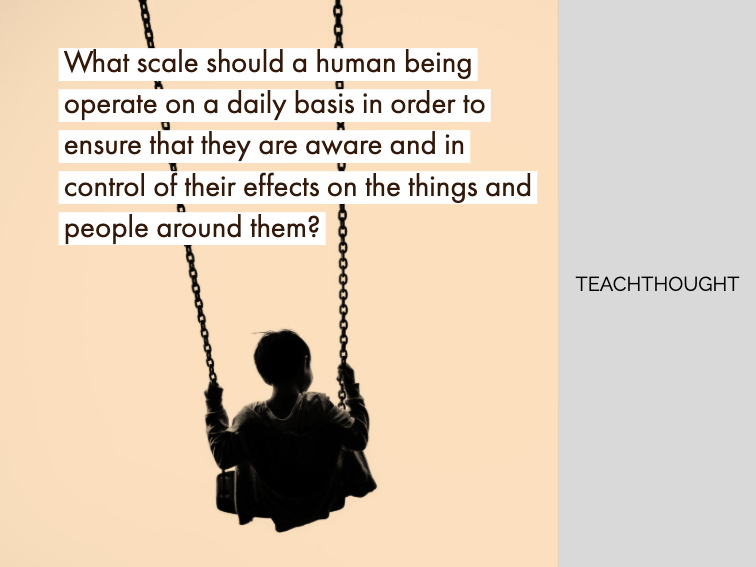
What Is The Challenge Of Scale In Learning?
by Terry Heick
I
Scale is the breadth of context for the application of a thing and like purpose, audience, and context, scale is a factor in application.
Scale is also a characteristic of context and can be judged by the ambition of its purpose and its subsequent precision. (This precision is a factor of quality.)
That is, what is it trying to do at what scale and how well does it do it?
II
A chosen scale, then, can be either precise or imprecise, overly ambitious or not ambitious enough.
The scale at which a thing is applied is a matter of design and can be chosen well or not well enough.
A thing may work well when you used one way and poorly another. This is function.
This is usually thought of crudely: function and application, or how and where a thing is used.
For example, a hammer works well at driving nails but less well as a paintbrush. That is simple enough and, oftentimes, function is easier to judge than scale.
To factor in scale, however, is to realize that a hammer possesses quality in its ability to drive 25 nails but not 250. A nail gun is better suited for the latter task while the hammer performs well at the less ambitious task of only driving 25 nails.
III
Scale affects quality.
To examine scale is to anticipate quality.
IV
Many challenges, then, are challenges of scale.
This means that scale is a central tenet–or factor–of design.
If design and scale are out of alignment, the design can be said to be incompetent. (This is always a failure of design rather than scale, of course; scale is passive and design is active.)
Understanding the scale of a thing is necessary to understand the thing insofar as it is placed or used.
Understanding the scale of a thing requires also us to understand its history and in many ways, the reverse is true.
To summarize in part, the history of a thing is part of its context and scale is a cause, effect, and factor of each.
V
Things can be said to have quality insofar as their design, function, application, and scale are reconcilable and in alignment.
VI
Things can also have their quality measure by analyzing their effect on other things.
This can begin with the intended application and scale of a thing but can’t be limited to them.
For example, we could say a hammer possessed quality because it could drive nails quickly if a by-product of driving all of those nails was some kind of harmful byproduct whose value exceeded its nail-driving.
To understand quality requires us to understand function, application, context, and scale–and most crucially, effect.
We might ask:
1. What is this thing supposed to do?
2. At what scale is it best-suited to operate?
3. What are the visible and less visible outcomes of this function?
4. What effect does this thing have on all other things and how can we make adjustments (e.g., to scale, context, application, etc.) in response?
VII
What is the ‘appropriate’ scale of a school?
What is the potential scale of a child’s imagination?
What scale should a human being operate on a daily basis in order to ensure that they are aware and in control of their effects on the things and people around them?